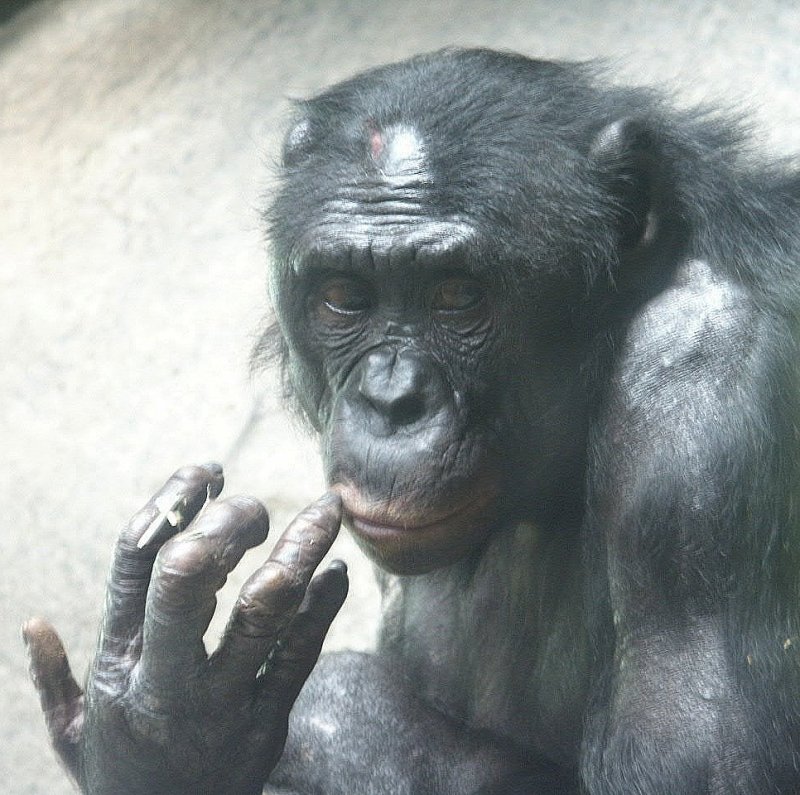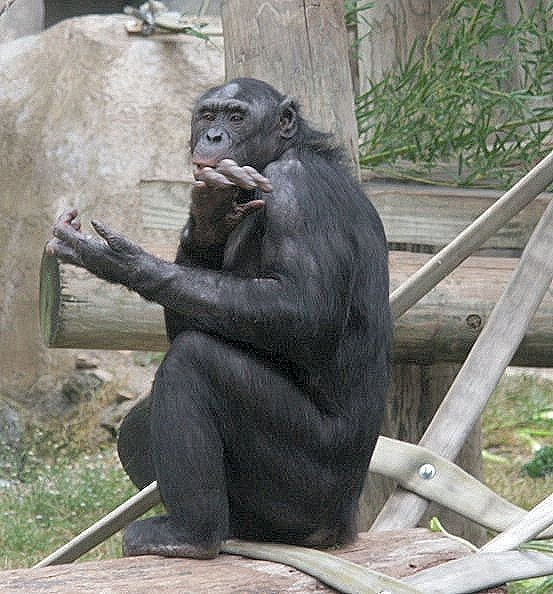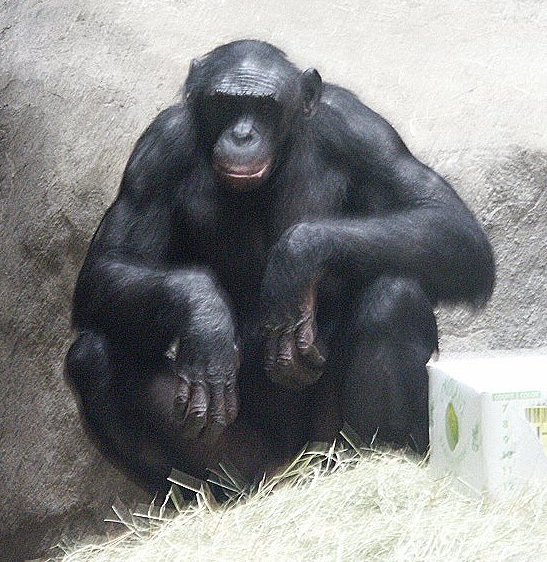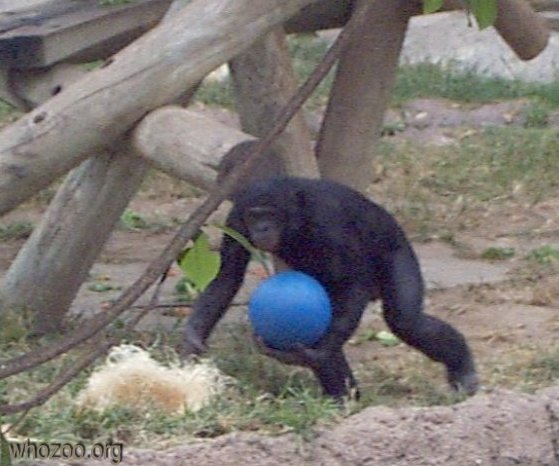|
Special anatomical, physiological or behavioral
adaptations:
They like to live and travel in large groups, sometimes up to 100
individuals. They seem to have developed rules for how to deal the any
problems that may come up and seem to have a very complex communication
system. Many scientists suspect it may be a language rather than only
emotional expressions.
Bonobos show considerable tool-using skill in captivity, including
the extraction of honey with sticks from artificial termite mounds, but
in their natural habitat they have thus far never been seen to probe for
insects, sponge water, or crack nuts with stones.
They have strong social ties to each other through sexual interactions.
Bonobos make love not war to settle internal disputes. The chimpanzee's
sex life is rather plain and boring; Bonobos act as if they have read
the Kama Sutra. Continued research has made it clear that overt
sexuality is an integral part of Bonobo society.
Some distinctions between Bonobos and Chimpanzee's are as follows:
1. Bonobos are sensitive, lively and nervous, whereas chimpanzees
are course and hot tempered.
2. Bonobos rarely raise their hair; chimpanzees often do so.
3. Physical violence almost never occurs in Bonobos yet it is common
in Chimpanzees.
4. Bonobos are more vocal than chimpanzees.
5. While wild chimps generally knucklewalk around on all fours,
bonobos walk upright for short distances. All Bonobos are excellent bipeds
and often walk on two legs when caring food.
|



 The
3 bonobos are very easy to tell apart. They have very distinct personalities.
The Leader of the group is named Kevin. He is the baldest and the smartest.
He tends to sit with his arms up around himself a lot and he is the
most dominant. He was raised by people.
The
3 bonobos are very easy to tell apart. They have very distinct personalities.
The Leader of the group is named Kevin. He is the baldest and the smartest.
He tends to sit with his arms up around himself a lot and he is the
most dominant. He was raised by people.